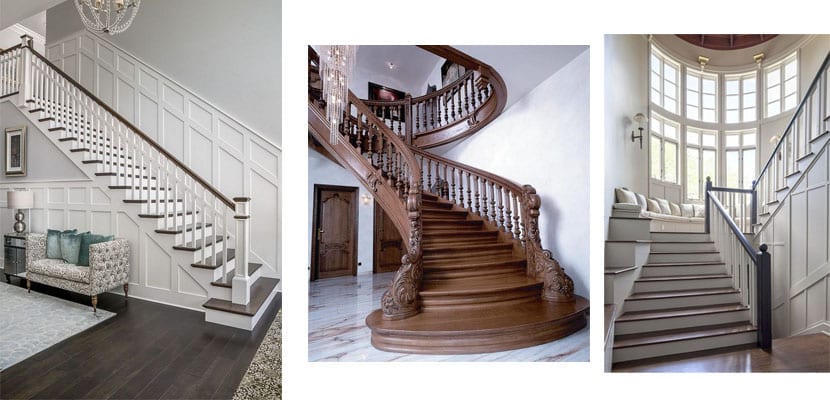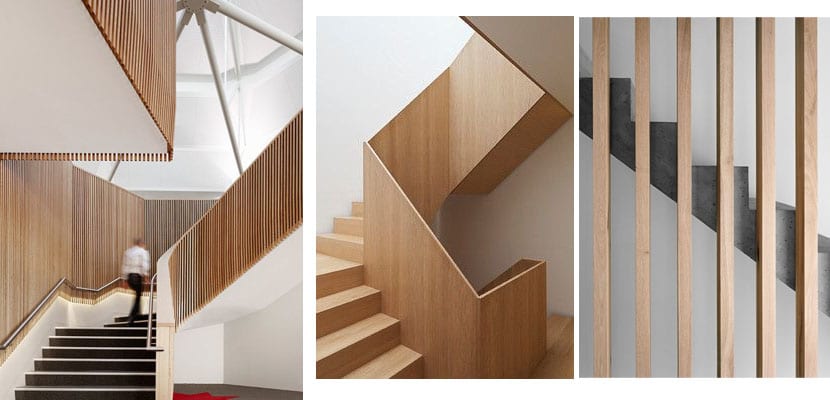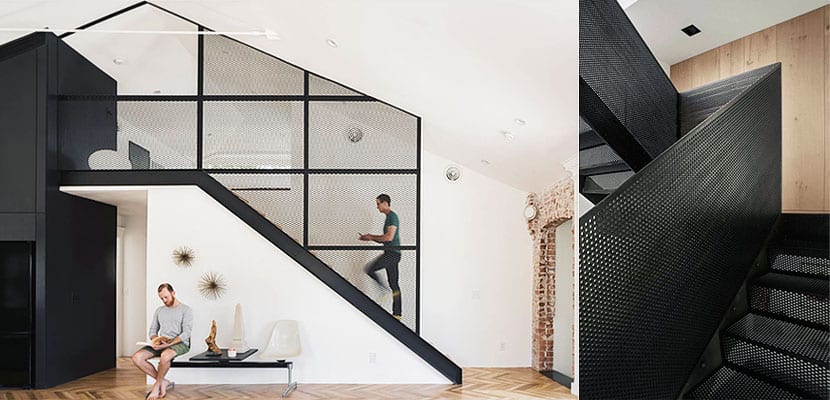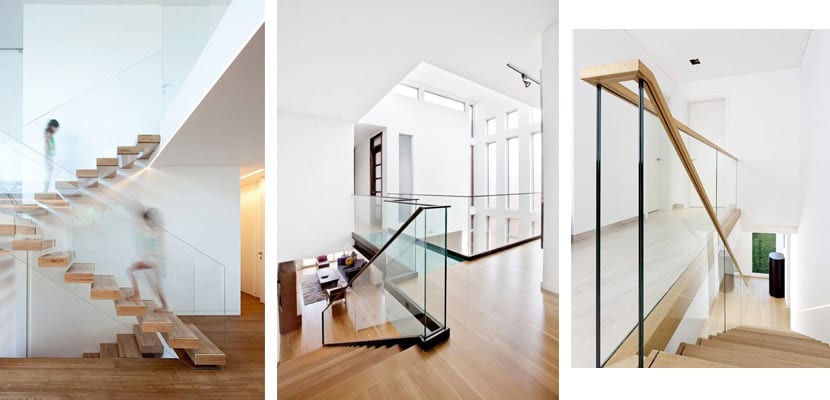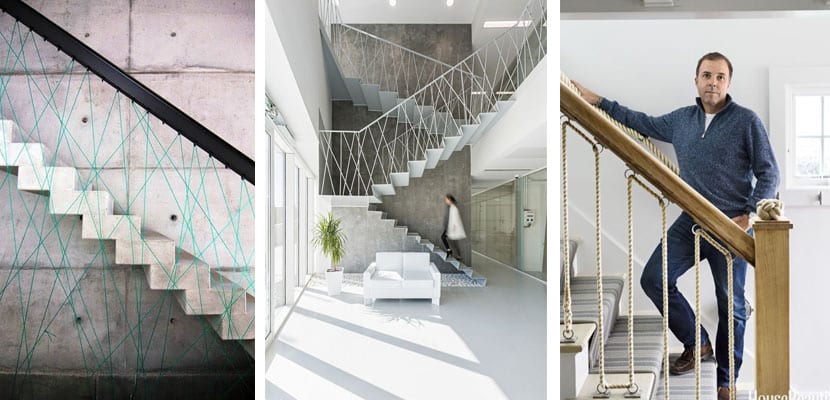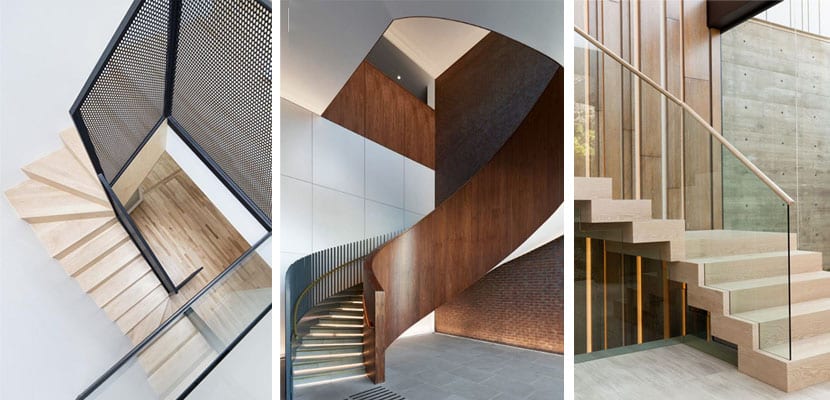
The stairs they communicate the different architectural levels of a house, but they are much more than an architectural element. They bring personality to the space and often become the focal point of the room. The railings make these safer but also add their own style to them.
The RAE define railing as "Parapet composed of balusters of wood, iron, bronze or other material, and the railings that hold them, commonly used for balconies, stair handrails and part division. A definition open to different designs, one for each style!
Wooden stair railings
The first material mentioned in the definition of railing is wood. Wood has been one of the most used materials to outline this element and it is still the protagonist of railings of classic style stairs like the ones we show you below. Alone or as a handrail material in conjunction with elaborate wrought iron balusters.
Not all wood railings have that classic look. Wood can also shape modern railings, protagonists of contemporary and avant-garde homes. The solid railings in wood They are preferred to decorate minimalist spaces, but the wooden bars from floor to ceiling are the main protagonists of modern spaces in combination with concrete.
Metal stair railings
All the railings with metal grid They are a great alternative to give a modern and industrial touch to a specific space. For decades their use has been limited to the world of industry but today they are part of the urban furniture of many cities and the most avant-garde homes.
Both the treads and the mesh railings have a robust aesthetic, but also light. Light can leak from one side of the grid to the other; a feature that we can take advantage of a lot. It cannot help save light by allowing the light that enters through the ground floor windows to illuminate the staircase and reach the upper floor.
But not all metal stairs have to be mesh. exist minimalist versions with a more refined appearance that often accompany wooden stairs to achieve greater warmth or concrete to reinforce the industrial style of the same.
Glass stair railings
Glass railings are a great option for modern design open spaces and a great complement of floating type stairs. They allow a total view from the stairs of the entire space and vice versa without sacrificing the security provided by a railing.
They are particularly interesting when combined with wooden or concrete stairs. When the stairs are made of wood, in order to reinforce that warmth, it is common to incorporate a small wooden handrail to the railing. When they are made of concrete, on the other hand, the metal handrails are the favorites.
Rope railings
There are other materials with which we can build beautiful stair railings. Ropes, for example, can serve as a railing in different ways. And the best thing is that it is a material that we can manipulate ourselves and with which we can afford be creative.
The most classic proposals invite us to follow regular patterns, placing the strings in parallel either horizontally or vertically. Modern and original, on the other hand, is the idea of crisscross strings of color no apparent sense. We can do it by drilling holes in the handrail or using clips on it to hook the ropes. At Decoora we have to admit that we love neon proposals on concrete stairs.
The railings have a very important role in the design of the stairs. They not only make these be more secure, they also add style to the mimas. Wood and metal stair railings are the most common, but glass railings, which in the last decade have become popular in open and modern spaces, are not far behind. What are your favorite railings?
